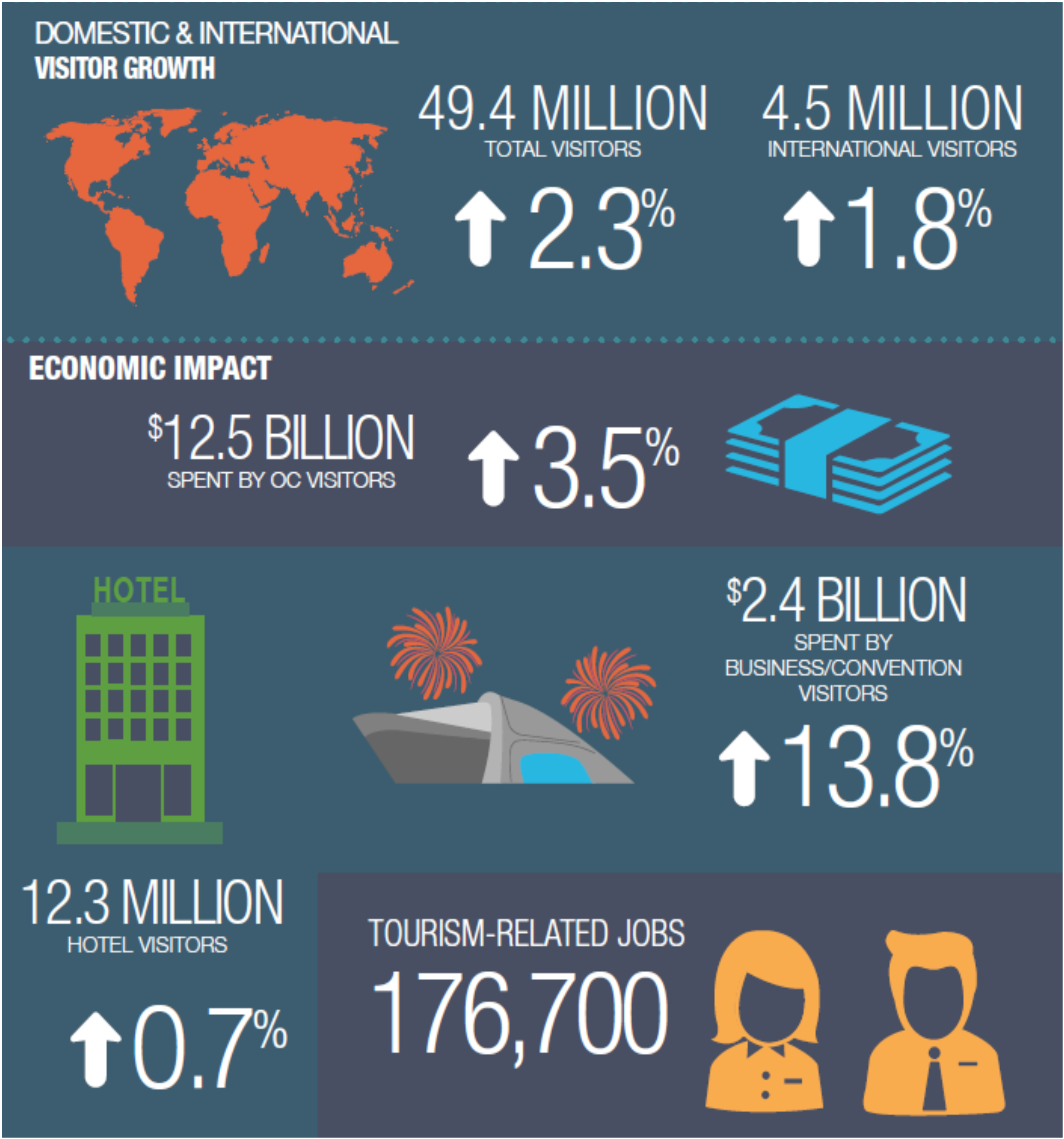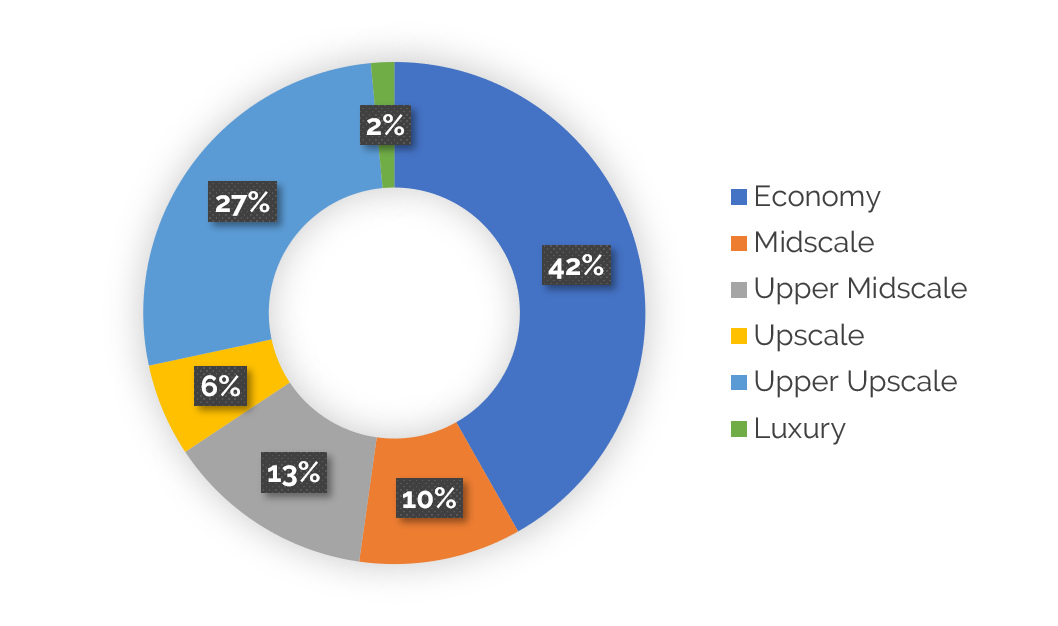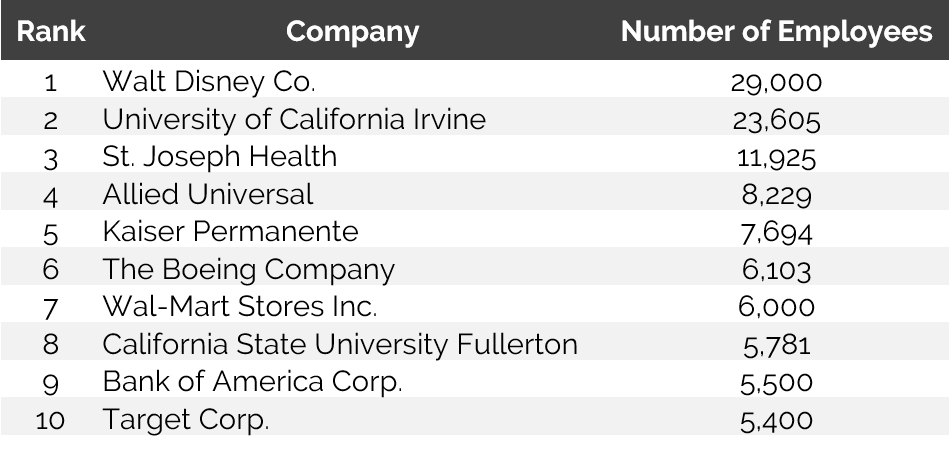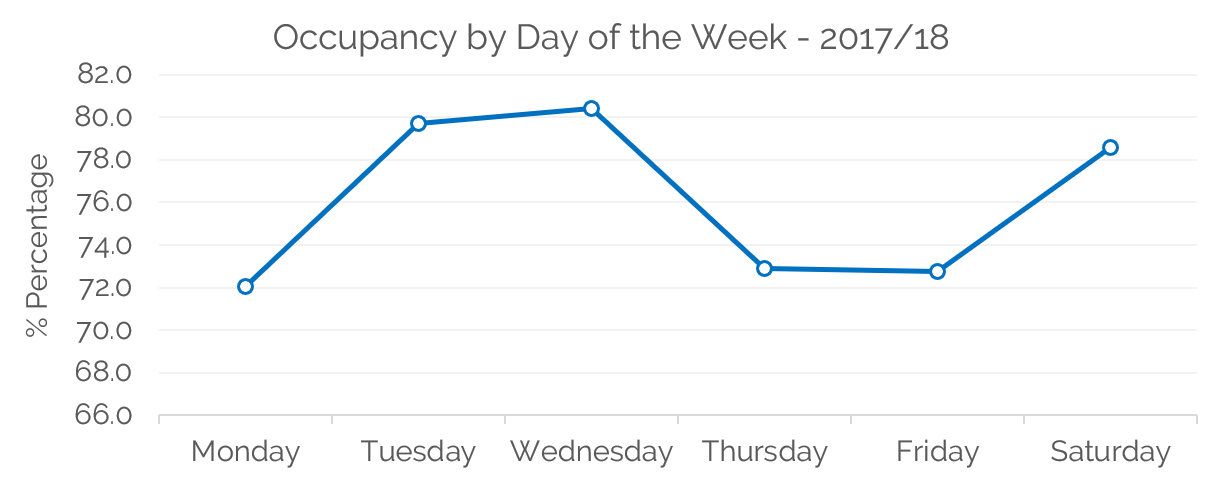
Whether it’s manicured beach towns or celebrated theme parks, Orange County stands out as one of California’s most iconic destinations. Located about an hour south of Downtown LA and two hours north of San Diego, Orange County remains a novelty for visitors and locals alike. Orange County relies on tourism, state and local government activity, and renowned institutions of higher education for its economic livelihood.
The Newport Beach, Huntington Beach, and Costa Mesa hotel submarkets have experienced varied activity over the last three years, with transactions, renovations, and re-brandings, as well as some new supply in the form of the SpringHill Suites by Marriott in Huntington Beach and the Paséa Hotel & Spa along the Pacific Coast Highway. These developments signal continued investor confidence and economic viability of this high-barriers-to-entry market. Average rates and RevPAR for the hotels in these three towns have risen steadily since the recession given the strength of the leisure market, coupled with economic development in neighboring Irvine, the greater Orange County area, and the greater Los Angeles economic basin. The following article highlights the fundamentals of the Hunting Beach, Newport Beach, and Costa Mesa economy and lodging market, as well as past and future development projects.
Tourism Demand
Tourism continues to represent the bulk of demand for Orange County hotels. The three big beach towns within Orange County are major economic drivers, supported primarily by tourism, as well as the many attractions and established businesses. Newport Beach is known for its mild Pacific coastal climate. It boasts a large recreational harbor, many beaches, two public piers, award-winning restaurants, excellent shopping, numerous corporate offices, and an exceptional quality of life. Adjacent to Orange County’s John Wayne Airport, which serves most major carriers, travelers have easy access to all that is offered in Newport Beach. The University of California at Irvine is also proximate, providing access to technology and a well-educated population. The city has a diversified and financially solid local economy, representing a popular destination for business and leisure travelers alike. The city government is well managed, fiscally sound, and fully capable of weathering the ups and downs of the economy without sacrificing services.

A view of Orange County’s coastline. Source: www.VisitCalifornia.com
Due to its abundance of beaches, sunny Mediterranean climate, local surfing, and casual lifestyle, Huntington Beach has emerged as the perfect vacation experience. With miles of uninterrupted, pristine beaches along the Pacific Ocean, ideal weather, a welcoming attitude, and a wide variety of entertainment options, Huntington Beach plays host to an annual visitor population of more than 11 million people, with peaks in the summer, during special events, and on the weekends. Other tourism demand generators include the International Surfing Museum, Surfing Hall of Fame, and Surfing Walk of Fame.
Costa Mesa is arguably the cultural epicenter of Orange County, pulling in visitors from around the Southern California region and the world to experience the Art of the Fashion, the Art of Dining, and the Art of the Stage. The Costa Mesa Theater District is home to the world-renowned Segerstrom

Center for the Arts, the 1.6-acre Noguchi Sculpture Gardens, South Coast Repertory Theater, and Costa Mesa Playhouse. The city is also home to South Coast Plaza, one of the world’s crown jewels for shopping with scores of luxury brands, including Prada, Gucci, Hermes, and Chanel, all under one roof with easy access and convenient parking. With more than 250 retailers, this luxury shopping destination represents one of the highest concentration of high-end designer boutiques in the world, rivaling Fifth Avenue in New York and Bond Street in London.
All three cities are also centrally located to the major attractions throughout Greater Orange County. In Anaheim, tourists can visit the world-famous Disney Resorts; Honda Center, home of the Anaheim Ducks hockey team; and Angels Stadium, home to the Los Angeles Angels of Anaheim baseball team. The three cities are also conveniently served by three airports: John Wayne/Orange County (SNA), Long Beach (LGB), and Los Angeles International Airport (LAX).
Orange County has experienced record visitor growth four years in a row and counting. Of its nearly 50 million total visitors in 2017, 4.5 million of them were international visitors, speaking to the county’s broad, international appeal. These numbers are up 2.3% and 1.8%, respectively, from 2016 numbers. Orange County also realized a 3.5% increase in its visitor spending in 2017, which peaked at $12.5 billion. Additionally, business and convention visitors spent $2.4 billion in 2017 across the county, a 13.8% increase from the previous year. Orange County hotels hosted 12.3 million people last year. Moreover, the tourism industry is responsible for 175,000 jobs within the county.

Source: Anaheim/Orange County Visitor & Convention Bureau
Business, Industry, and Development
Higher Education
Higher education has a long and lauded history in Orange County and serves as a central pillar of the local economy, anchored the University of California Irvine (UCI). Founded in 1965, UCI is the youngest member of the prestigious Association of American Universities. The campus has produced three Nobel laureates and is known for its academic achievement, premier research, innovation, and anteater mascot. UCI has more than 30,000 students and offers 192 programs for degrees. Located in one of the world’s safest and most economically vibrant communities, it is Orange County’s second-largest employer, contributing $5 billion annually to the local economy.
The following table (Figure 1) illustrates a list of the top ten employers within Greater Orange County, reflecting the diversity of government, education, and healthcare sectors, as well as the leisure and retail industry, in the local market that is dominated by Disneyland.

Orange County Major Employers


Source: Orange County
Fast-Food HQ
The area is home to the headquarters of several of America’s best-known fast-casual food chains, including Irvine-based Taco Bell, Irvine-based In-N-Out Burger, Newport Beach-based Weinerschnitzel, and Costa Mesa-based El Pollo Loco Inc. By the end of 2018, Chipotle Mexican Grill will join this list when it completes the relocation of its headquarters from Denver to Newport Beach. The fast-casual Mexican food chain signed a lease in July 2018 to sublease two floors at Fashion Island, a bustling retail and entertainment complex in Newport Beach. Fashion Island is owned by The Irvine Company, one of Southern California’s largest private land owners. According to JLL, the listing brokerage, Chipotle’s sublease runs through September 2020, after which the company plans to secure a permanent space for its new headquarters.
Lodging Market Economics
Market Composition
According to Smith Travel Research (STR), the Orange County beach cities of Huntington Beach, Newport Beach, and Costa Mesa encompassed 61 hotels and over 9,000 available rooms as of May 2018. The market is made up of various hotels serving various chain scales and market segments. The pie chart below illustrates the breakdown of hotels by chain scale across the three cities. The most common chain scale represented is the upper-upscale, full-service hotel.
Hotels in Huntington Beach, Newport Beach & Costa Mesa by Chain Scale

Source: HVS, STR
Market Recap: Supply Change and Recent Acquisitions
2015
Since 2015, significant market activity has occurred within the Huntington Beach, Newport Beach, and Costa Mesa submarkets. Beginning in February 2015, the former independent Shorebreak Hotel in Downtown Huntington Beach was acquired by DiamondRock Hospitality for $58.5 million. DiamondRock tapped Kimpton Hotels & Restaurants to manage this surf-themed boutique hotel. The hotel then underwent a $3-million, property-wide refurbishment that was completed in January 2017, inclusive of a new restaurant, new décor and furnishings in all guestrooms, and an expansion of the fitness center. Several other properties switched hands in 2015, including the Quality Inn & Suites Huntington Beach, Huntington Beach Inn, and Avenue of The Arts Hotel in Costa Mesa.
2016
In May 2016, Pacific Hospitality Group and R.D. Olsen Development debuted the 250-room Paséa Hotel & Spa as part of the Pacific City shopping, dining, and entertainment complex along the Pacific Coast Highway. The hotel joins the Meritage Collection’s portfolio of luxury and lifestyle hotels and resorts and boasts coastline and ocean views from every room. The eight-story hotel, which cost over $137 million to develop, includes over 34,000 square feet of meeting and event space, including an 8,400-square-foot ballroom with an adjoining 14,000-square-foot Ocean Lawn. The hotel also uniquely features a Beach Butler program that updates guests with the latest weather and tidal reports, arranges surf lessons with local instructors, and stores surfboards and other equipment for guests.
2017
The 127-unit SpringHill Suites by Marriott Huntington Beach Orange County, developed by San Diego-based Excel Hotel Group, opened in August 2017. The former Fairmont Hotel Newport Beach was purchased in February by an undisclosed foreign ownership group (represented by Los Angeles-based Infinity Realty Advisors) from Sunstone Hotel Investors for $125 million. Fairfax, Virginia-based Crescent Hotels & Resorts was appointed to manage the hotel after the sale. The hotel was temporarily operated as The Duke Hotel while it underwent extensive renovations, estimated at over $30 million, in preparation for its conversion to the Renaissance by Marriott affiliation. All public-area renovations were completed in February 2018, at which time it became the Renaissance by Marriott Newport Beach Hotel. Guestroom updates were completed in August of the same year. The iconic property, distinctive for its temple-like architecture and three terraced guestroom wings jutting out from the main atrium, features 27,000 square feet of meeting and event space, a basketball court, a bocce court, a tennis court, and 444 guestrooms and suites.
2018
R.D. Olsen Development adds another hotel to its development stable, this time in Newport Beach, with the opening of the Lido House, Autograph Collection Hotel in April 2018. The 130-room, Cape Cod-style, Marriott-affiliated, upper-upscale hotel features a rooftop lounge, a spa, a salt-water pool, and a custom champagne blend created in France. R.D. Olsen Development holds an 85-year lease from the City of Newport Beach for the land. Also, in April, Beverly Hills-based Newport Hotel Holding LLC completed renovations and the reflagging of the former Radisson Hotel Newport Beach to the Hyatt Regency John Wayne Airport. Property-wide renovations to this hotel, located adjacent to John Wayne Airport, were estimated to have cost up to $35 million. The 343-room hotel features a towering, seven-story, central atrium and 28,000 square feet of meeting space.
Market Seasonality
When looking at the occupancy rate by month and days of the week, the Orange County beach hotel market is relatively consistent. Figure 3 illustrates the monthly changes in occupancy rate percentage. Based on STR data of select full-service properties, the occupancy levels peak during the summer. This strengthens the argument that hotels in the Orange County beach area rely on their most important asset to draw in guests during the summer. Figure 4 highlights peaks in occupancy during both midweek and Saturdays, which speaks to the strength of both the commercial and leisure demand segments and their respective abilities to fill rooms across the week. Overall, occupancy levels in the trailing twelve months ending May 2018 are consistently above 68% throughout various seasons, illustrating the unique stability of hotels in this area.
Orange County Beach Market Monthly Seasonality


Source: STR
Orange County Beach Market Weekly Seasonality


Source: STR
Continued RevPAR Growth
STR data of select full-service hotels in Huntington Beach, Newport Beach, and Costa Mesa indicate continued RevPAR growth from 2009 through 2017. RevPAR has recovered strongly since the recession, with growth sustained at over 5% on average annually from 2010 through 2017. This strong RevPAR growth is spearheaded primarily by strengthening average rates at this set of hotels. According to STR data, average rate grew from $142 in 2009 to just under $195 by year-end 2017. Year-to-date May 2018 data suggest a continuation of this trend, with average rate increasing to over $195.Outlook
Rate-Growth Opportunities
Strong leisure and commercial demand, coupled with strengthening group demand, has remained a positive factor for hoteliers in the last few years. These types of demand ensure consistency in occupancy levels across the week and across all seasons. Strengthening national and local economics, as well as the area’s viability as an alternative business location to the ever growing and densely-populated Los Angeles County to the north, should continue to spur future growth in Orange County’s economy in the near term. The lack of any foreseeable new supply in the near future, coupled with several full-service hotels completing major property-wide renovations, should continue to bolster ADR growth as demand levels stabilize. Hoteliers, city officials, and other resident stakeholders in the greater Orange County beaches economy report a positive outlook for the area’s lodging industry, sharing predictions that occupancy will remain stable through the near term. Hoteliers are expected to usher-in continued rate-driven strategies as RevPAR continues to grow to new heights. It will pay to keep a close watch on the lodging dynamics of these Pacific Ocean-fronting cities, especially if performance continues to improve and new opportunities for proposed hotels come to light.About Marcus R. Lee
Marcus leads Business Development for the HVS Asset Management & Advisory division across the United States. Based in Los Angeles, he provides clients with a full array of third-party asset management services, hotel performance analyses, and brand and operator search and selection solutions. He is also the Asset Manager for two full-service hotels, which includes oversight of a $12-million, brand-mandated property improvement plan. In addition to his asset management expertise, Marcus has conducted feasibility and market studies, development consulting, brand and operator search and selection, and valuations, with an aggregate value of over $10 billion. His experience spans the United States, Caribbean, and Latin America, ranging from limited-service hotels to ultra-luxury resort-residential assets. He is a state-certified general appraiser. Contact Marcus at +1 (310) 614-9945 or [email protected].

0 Comments
Success
It will be displayed once approved by an administrator.
Thank you.
Error